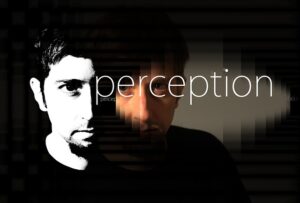Have you ever read a book or watched a movie and felt like you were the main character? That’s because the author was writing in the third-person limited point of view. This blog post will discuss the third-person limited, how to write from this point of view, and what to include in your stories.
What is the third-person limited point of view?
The third-person limited point of view is a type of storytelling where the reader is only privy to the thoughts and experiences of one character. This character is usually the protagonist, meaning their story is what drives the plot forward.
You can find the third-person limited point of view in many different genres. It’s trendy in thrillers because it allows readers to get up close and personal with the main character, which makes for a more suspenseful reading experience.
Good places to look for examples of the third-person limited pov:
Some good places would be Stephen King’s novels Misery and The Shining or James Patterson’s books featuring Alex Cross. But, of course, thrillers are all about suspense, so it’s no surprise that this point of view is so prevalent in the genre.
Let’s look at an example of the third-person limited point of view:
– She had always known that she would have to leave her home one day. It was the way of things, after all. But she never thought it would be so soon.
As you can see, even though we are not told who “she” is, we know quite a bit about her from this short passage. We know that she is leaving her home and is sad about it. The third-person limited point of view can be very effective in getting readers to connect with the main character.
The idea of the limited third-person comes from Ancient Greek drama, where the chorus would provide commentary on the action onstage but never interact with the actors themselves. In a way, this distanced perspective creates a more objective view of events.
Similarly, in the third-person limited point of view, we as readers can step back and observe the events unfolding through one character’s eyes, but we’re not as close to the action as we would be in the first-person point of view.
Why choose third-person limited?

The third-person limited can be an excellent choice for thrillers because it allows the reader to get into the protagonist’s mind and experience the suspense and thrills right along with them. It’s a more immersive point of view that can suck readers in and keep them hooked.
The third-person limited can also help build suspense, as it lets you reveal information to the reader slowly and tantalizingly, heightening their anticipation and keeping them guessing. This point of view is perfect for creating nail-biting scenes with readers on the edge of their seats.
Here are a few advantages to using the third-person limited pov
First, it can create suspense and tension by keeping the reader in the dark about certain key pieces of information. The protagonist may know things the reader doesn’t, leading to exciting plot twists and surprises.
Second, you can use it to create a more intimate connection with the reader. By sharing the thoughts and feelings of just one character, you can make the reader feel as though they are right there in the story with them. This can help readers connect with characters more deeply because we feel like we understand their thoughts and feelings more.
Third, it can heighten the sense of drama and excitement by providing an intimate look at all the action as it unfolds, which can be wildly thrilling for readers who enjoy fast-paced, suspenseful stories.
Fourth, it can create a more immersive reading experience by making the reader feel right there in the thick of things, which can be especially effective in horror and suspense novels where every little detail matters.
Fifth, it can help to build empathy for characters by giving readers access to their innermost thoughts and feelings, which is one of the main reasons why the third-person limited is so popular in novels that focus on character development.
However, the third-person limited does have its disadvantages

One disadvantage is that we, as readers, can only receive information from one character’s perspective, limiting the amount of information we can receive about the story.
Another disadvantage is that if the character is not likable, it can be challenging to establish empathy with the protagonist if we’re not as close to their thoughts and feelings.
The third-person limited point of view can also make it difficult to understand what is going on if multiple plotlines happen simultaneously because we only receive information from one character’s perspective.
Additionally, because the third-person limited is told from only one character’s perspective, it can be easy for the author to introduce bias into the story inadvertently.
How to use the third-person limited?
To use the third-person limited point of view, you must choose a storyteller and focus on one character’s thoughts, feelings, and experiences while keeping the other characters at a distance.
This technique is perfect for exploring a complicated protagonist as readers gain insight otherwise unavailable.
When writing in the third person limited, you tell the story from a single character’s perspective. Therefore, you can only include information that this character would know, which can be tricky to get used to, but it’s a great way to make your readers feel like they’re getting inside your characters’ heads.
It’s important to note that third-person limited isn’t impartial; the storyteller is still responsible for staying objective.
Here are a few different ways to use third-person limited in thrillers

One way is to switch the point of view between different characters, sometimes even within the same scene. You can use this to create suspense by keeping the reader guessing about what a character is thinking or planning.
You can also use it to show different perspectives on the same event or give readers access to information that some characters don’t know.
Here is an example:
Let’s say there’s a scene where two characters are arguing. From one character’s perspective, it might seem like a simple disagreement. But if we see the same scene from the other character’s perspective, we might realize that this is a bitter argument that could turn violent at any moment.
Another way to use the third-person limited in thrillers is to focus on one character’s thoughts and experiences while providing insight into other characters’ thoughts and feelings.
You can use this to build suspense by showing how events affect the protagonist while hinting at things the other characters think or plan. You can also use it to create empathy for the protagonist by showing how their experiences affect them.
When using third-person limited in thrillers, it’s important to focus mainly on the thoughts and feelings of the protagonist.
Don’t avoid including tense action scenes or juicy plot twists, but ensure that the reader can always access what’s going on in the main character’s head. This will help keep them engaged and ensure they feel like they’re a part of the story.
Examples of the third-person limited point of view from popular books and movies

There are many examples of the third-person limited points of view in popular books and movies. One example is the Harry Potter series, which is told from Harry’s perspective. Another example is the movie The Lord of the Rings, which is told from Frodo’s perspective.
One great example of the third-person limited point of view comes from the book The Catcher in the Rye by J.D. Salinger. The novel is told from the perspective of Holden Caulfield, a 16-year-old boy struggling to make sense of the world around him. Unfortunately, we only see and hear what Holden experiences, making it a perfect example of the third-person limited point of view.
Another great example is Harper Lee’s To Kill a Mockingbird. This novel also uses the third person limited point of view, but it does so from the perspective of a child, Scout Finch. We see the world through Scout’s eyes and hearing, giving us a unique perspective on the novel’s events.
Another great example is Kazuo Ishiguro’s The Remains of the Day. The novel is told from Stevens’s perspective, a butler who tells his life story in retrospect. This technique allows Ishiguro to explore themes of nostalgia and regret and gives readers a unique insight into Stevens’ character.
Another example would be Hitchcock’s classic film Rear Window, which takes place entirely from the limited perspective of its main character, played by Jimmy Stewart.
An example of this is Kazuo Ishiguro’s Never Let Me Go, where the third-person storyteller gives us insight into the life of a young woman who is living in a dystopian world where people are created to be organ donors.
In Throwaway by David Baldacci, third-person limited pov is used to slowly reveal clues about the protagonist’s past that helps explain his present situation and motivate him to take action.
Another great example is in Michael Crichton’s Jurassic Park, where the storyteller focuses on Dr. Alan Grant’s point of view while providing information about the other characters’ actions.
Tips for avoiding common pitfalls associated with a third-person limited pov
Choose a strong viewpoint character. This is the most important decision you’ll make. Your viewpoint character should be someone exciting and complex, with a clear motivation for driving the story forward.
When writing in the third person limited point of view, it’s important to avoid head-hopping when the storyteller slips out of the protagonist’s head and into another character’s thoughts for a brief moment. This can be unclear for readers and disrupt the flow of the story.
Another common pitfall is info dumping when too much information is crammed into a single scene or paragraph, which can be especially problematic in thrillers, where suspense is critical.
Instead, try to spread out knowledge throughout the story so that readers have time to digest it and get excited about what’s coming next.
Lastly, it’s essential to control your plot and characters. Thrillers often involve high stakes and complex plot lines, so getting lost in the details is easy. If you are bogged down, take a step back and ensure you know where the story is going and who all the players are.
Make sure your reader knows who the viewpoint character is at all times, which can be challenging, but it’s essential to keep your reader oriented by focusing on your viewpoint character’s thoughts and experiences.
Conclusion
The third-person limited point of view can be an extremely effective tool for writers looking to create suspense and tension in their thrillers. By taking advantage of its advantages and avoiding some common pitfalls, you too can use this point of view to write page-turning thrillers that your readers won’t be able to put down.
Give it a try!
If you’re working on your first novel and are looking for more help with your writing, please check out my other articles at https://ullahakanson.com/blog/
Best of luck with your writing!
Ulla

